
In Japan, many people are using bicycles for everyday life. However, the system for bikes in the big city, as Tokyo has not yet been established.
On the other hand, in the rural area, the bicycle is a very good tool to explore the local area and enjoy the attractions along the way.
National Cycle Route is a link site combining the cycling route with excellent tourist resources, riding environments, rest and accommodation facilities, and information dissemination.
These cycle routes that meet the requirements of safety, riding environment, and the dissemination of information about tourism and accommodation in the surrounding area will be designated as the National Cycle Route by the Ministry of Land, Infrastructure, and Transport.
Now 6 routes are designated from Hokkaido to Hiroshima, and the longest route is the Pacific cycling road.
This road starts from Choshi in Chiba through Kamakura in Kanagawa, Shizuoka, Aichi, Mie to Shirasaki beach in Wakayama prefecture along the seaside of the Pacific Ocean.
This route has many of Japan’s most popular tourist and scenic spots, including Mt. Fuji.
The representative places in each prefecture as below are included in the Pacific cycling road.![]()
Chiba, Inubosaki
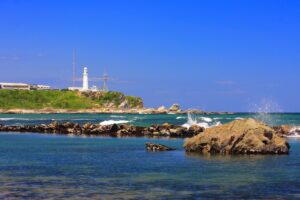
It is a cape jutting out into the Pacific Ocean with a circumference of about 500m, with the white sand of Kimigahama Beach and a coastline full of strange and huge rocks to the south. At the tip of the cape is the white chalk Inubosaki Lighthouse, where many people come to see the first sunrise of the year.
Kanagawa Shonan beach
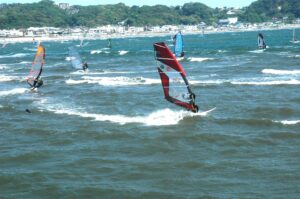
Shonan Kaigan Park is located along the coast from Katase Kaigan to Kugenuma Kaigan.
We can walk to Enoshima Island and see Mt. Fuji from this beach. And many surfers are enjoying the waves every day.
This beach is not so far from Tokyo, so it is a great place to take a stroll and feel the sea breeze from escaping the hectic city life.
Shizuoka Izu Peninsula
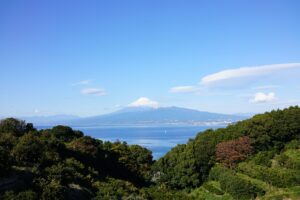
The coastline of the Izu Peninsula is rich in nature. After passing through the hot spring tourist areas of Atami and Ito, we can see Mt. Fuji over Suruga Bay.
The south tip of the Izu Peninsula has the clearest water beaches on Japan’s mainland and many divers visit here all the time.
Aichi Irago cape
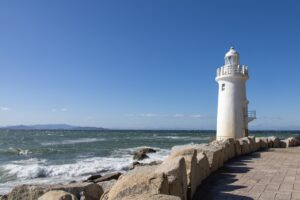
The beautiful white sandy beach, curved by the rough waves of the Pacific Ocean, stretches for about 1km from Cape Irago Lighthouse to Hinode no Ishimon.
This beautiful Cape Irago lighthouse has played a major role as a beacon for the many ships passing through the Irago Channel.
Mie “Fu-fu” rocks
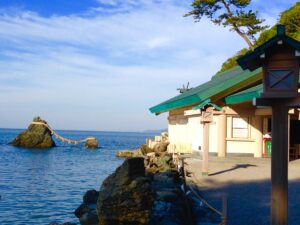
The two rocks (a male rock and a female rock), tightly bound together by a large shimenawa rope, are called the “married couple rocks” and serve as a torii gate to worship the goddess Okutama and the sun.
The two rocks, one large and the other small, are friendly lined up and are regarded as a symbol of love.
From May to July, you can see the sunrise between the two rocks. And, from November to January, when the moon is full, you can see the moon rise between the rocks.
Wakayama Nachi falls
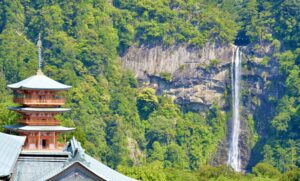
The Nachi Waterfall is a waterfall that cuts through the virgin forest.
The main stream flows from Mt. Okumotori (behind Mr. Nachi) and a number of streams overlap the main stream to result of The Nachi Waterfall.
The water column has a drop of 133m, a width of 13m at the mouth of the waterfall and a depth of 10m at the waterfall basin.
The waterfall is the highest in Japan.
Why don’t you ride on the bike and run follow the National Cycle route?
![]()